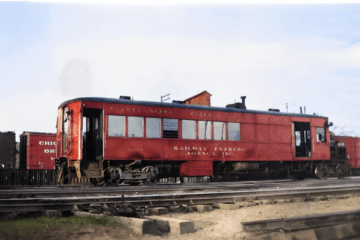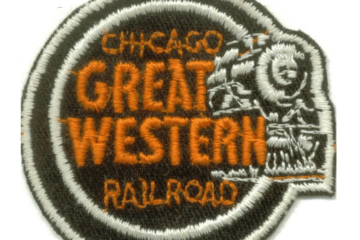An unusual box car caught my eye and became a candidate for creating a scratch building project with a series of future videos. Scratch building means exactly how it sounds: building something from scratch and not from a kit or bashing a ready to run model. Scratch building is the process of assembling a model with parts and components fabricated by yourself or using detail parts from the hobby shop if available. Incorporated into this process are extra items from my junk box, parts drawers, leftovers from other projects, and cigar boxes from miscellaneous collections too good to throw out. From these great finds, it is possible to bring into existence a unique piece at a very low cost.
The criteria in my book before starting a scratch build is that it has to be unique. Once the decision has been made as to what can be built it is time to move forward. The first thing I do in scratch building is gather research and history about the car. Once I learn about the car, I determine if there will be any challenges to its construction. And, it seems, there are always challenges along the way. To me- it is what makes scratch building fun and why I do it.
In my current case, I am building a 40′ steel box car. It is unique in the sense that the railroad company only had a few pieces of this rolling stock. They may have made modifications to the car in their shops to service a particular drayage situation or the transport of a commodity. This same type of car is not common on anyone else’s layout because no other manufacturer made a hundred thousand replicates.
Specifically, the chosen piece I am working on right now is the Reading Railroad XMy number 106466. The first noticeable feature about this box car are the two small doors on either side of the normal large panel door. While I do not currently have drawings for the car configuration, I did obtain two black and white negatives (see below) likely taken right after the car was modified. This RDG was built in September 30, 1947. Consequently, scanning the negatives at various resolutions, especially at 2400 dpi, I could confirm its build was 1947 and on the car door it stated “For Bulk Beans Only”. Soy beans came to mind, but that did not make sense given the area of the country where it transported goods.
As it turned out the car was in a wreck on the New York Central and was converted to a bean car around May 13, 1960. It was eventually retired in February 1965. Based on several Internet forum discussions, those who were better in the know than I, they stated similar cars were used on the Atlantic Coast Line (ACL). Its practical use was to transport cocoa beans from the east coast and deliver them to Hershey, Pennsylvania.
Further study of the photos just barely revealed roof hatches. The hatches were similar to those used on reefers or perhaps used for loading as in the air slide hopper cars. Below the two small doors on the car side it appears to have a floor drop panel door and internal sloped slides for unloading. In any event, this should be enough information to at least get the project started.
Below you can see for yourself this intriguing and unique box car. I will keep you updated on my progress as time goes on.
CLICK HERE to watch the first video in the series: The RDG Project




